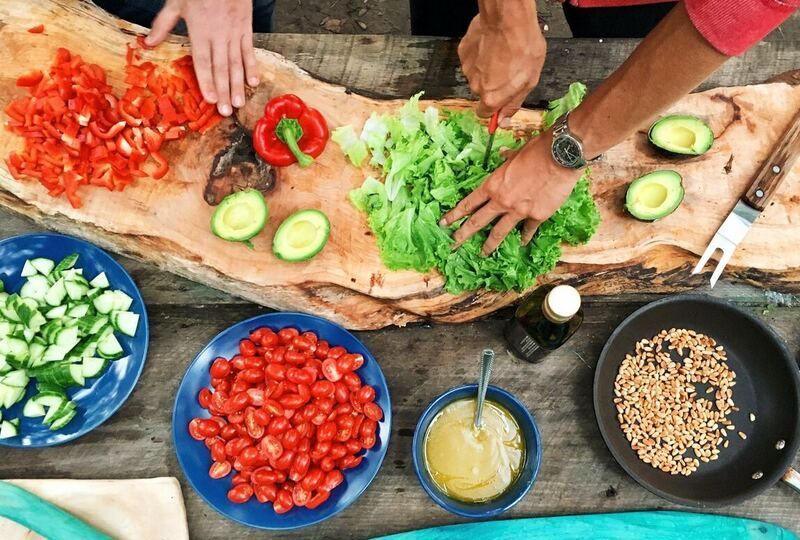7 Fun and Engaging Ways to Practice Spanish in Everyday Life

It can be difficult to learn Spanish. Staying engaged in the material is not easy, especially if you’re learning in a conventional way. Traditionally, languages are learned through translation. A teacher might ask you to translate a sentence from English to Spanish or match a list of vocabulary words. While these exercises are valuable and have their place in language learning, it can sometimes be a grind. Here, we’ll go over ways you can practice and improve your Spanish in a fun way and incorporate your learning into everyday life.

1. Singing in Spanish
Music is a great way to learn about the culture while improving your language abilities. Learning the lyrics helps expand your vocabulary. I recommend writing down words from the song that are new for you and writing their definitions. Every time you sing the song, you’ll be reviewing your new vocabulary in context. Furthermore, singing along to songs in the target language can aid in pronunciation. With enough practice, your pronunciation can become smoother and more natural sounding as you continue to practice the same phrases over and over. Another way that singing in the target language can help you on your language learning journey is by teaching you typical phrases and constructions. Hearing the way the language is put together repeatedly can help the language sound more natural to you which will lead to greater fluency. With time, you’ll feel like certain groups of words together just make sense. Music is a key ingredient to any language learning toolkit.

2. Cooking Using Recipes in Spanish
Do you enjoy cooking? Try this challenge to incorporate Spanish into your culinary creations! Pick a Spanish-speaking country that interests you and search for a recipe from that country. Open the recipe in Spanish and see how well you can prepare the dish using nothing but your own skills! Look up a picture of the dish if that makes it easier for you. Will the result be delicious or disastrous? If that’s too risky for you, try translating the recipe ingredients and following it normally. You’ll learn new words and expand your horizons by sampling another culture’s cuisine.

3. Watching Netflix in Spanish
I won’t be the first educator to recommend watching TV in Spanish. It’s one of the first suggestions people make when you tell them that you’re trying to learn a second language. I do propose, however, that you watch your content twice! Watch through your show in Spanish while trying to guess what is being said. If the whole show is too much for you to digest at once, you can watch in 5 or 10 minute sections. After that, watch it back with English subtitles or dubbed in English. How accurate was your guess? What did you get right, and what did you miss? If this is too much for you at the moment, you can also consider a Chrome add-on called Dualsub. This will run two sets of subtitles at once, which will make comparing the languages easy. Pause where you need to and compare how things are said in both languages. This can be a great way to learn phrases and more advanced constructions. I would also recommend that you prioritize watching shows that come from Spanish-speaking countries rather than watching shows that originally aired in a language other than Spanish. This will ensure that you’re also picking up cultural references and information. There are plenty of great Spanish shows on Netflix to choose from!

4. Texting in Spanish
Do you enjoy social media and interacting with people? Try finding a penpal in Spanish! You can message with this person and learn more about their culture. Interpals and italki are two common sites used for texting and chatting with people in other countries. If you’re not comfortable communicating with strangers, you can also use ChatGPT! Simply ask ChatGPT to practice speaking with you in Spanish, and it will have a conversation about whatever you want to talk about. Be sure to ask it to point out your mistakes so you can learn from them.

5. Reading in Spanish
Reading in Spanish is a common suggestion for language learners. It’s great to read new stories and authentic texts from the target culture. This is one way to learn about the culture and its important literary works, however, I would suggest that you read something in Spanish that you’ve already read in English. The familiarity of a story you know well can help you piece together the language and expand your vocabulary. It will be easier to follow because you already know what will happen, and you can focus on the language. Another thing you could consider is to read a classic in the target language and go on a website like SparkNotes. There you can take a quiz to see how much of the story you comprehended.

6. Playing Video Games in Spanish
Video games can also be a great way to practice your Spanish. If you enjoy video games, this is one way to incorporate Spanish into something you’re already doing! Video games provide plenty of context clues and visual stimuli as you play, so this will make it easy for you to piece things together and learn new words effortlessly as you play. Try changing the language of your device to Spanish. This way, many of your games will start in Spanish automatically. Playing video games in Spanish is a fun way to learn, and it won’t even feel like hard work!

7. Shopping in Hispanic Stores and Neighborhoods
Do you know where Hispanic people shop in your community? Take the time to hunt down Hispanic grocery stores and shops in your neighborhood. You can interact with locals when you go to the store. Tell them you’re learning Spanish, and I’m sure most people will be happy to help you learn. I’ve come across many people in Hispanic grocery stores that were sympathetic to my slower speech or pronunciation issues when I was still learning, and the experience was always very enriching. Another benefit is that you can be exposed to products that are new to you. Pick up a package, read the product description, and try to make something new. You can combine this suggestion with the previous recipe suggestion. Ask a Spanish-speaking worker to help you find what you need for the recipe!

Creating Your Own Immersion Program
Ultimately, these suggestions were created with the thought of designing a personal immersion program. Many people say that the best way to learn a language is by going to the country in question and having a full immersion experience. When I was learning Spanish, this suggestion seemed easier said than done to me. Not everyone can afford to pick up everything and move to Spain for 6 months at a time. Take these suggestions and even expand on them to create your own immersion program and simulate what it might be like to be in a Spanish-speaking country. Put Spanish on your phone, your TV, in your books, on your playlists, and in your social media. I think you’ll be surprised with the results.